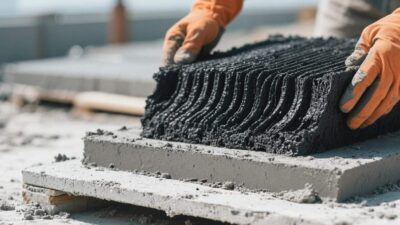Turning Waste into Watts – A Sustainable Revolution in Water Management
The Wastewater Dilemma – A Call for Innovation
Every day, cities around the world generate billions of gallons of wastewater—sewage, industrial runoff, and agricultural drainage. Treating this water is a critical public health and environmental imperative, but traditional methods are energy-hungry, costly, and often inefficient. Enter microbial fuel cells (MFCs)—a revolutionary technology that transforms wastewater from a burden into a resource. By harnessing the metabolic power of microorganisms, MFCs generate electricity while cleaning water, offering a dual solution to two pressing global challenges: energy security and sustainable wastewater management. Let’s explore how these “bio-batteries” are rewriting the rules of water treatment.
What Are Microbial Fuel Cells? The Biology Behind the Tech
At its core, an MFC is a device that uses living microbes to convert organic matter in wastewater into electrical energy. Think of it as a biological battery, where the “fuel” is sewage or industrial effluent, and the “powerhouse” is a community of microorganisms.
The Anatomy of an MFC
- Anode Chamber: This is where the magic happens. Wastewater flows into the anode, which houses electroactive microorganisms (e.g., Geobacter, Shewanella). These microbes “eat” organic pollutants (like sugars, fats, and proteins) and release electrons as a byproduct.
- Cathode Chamber: Electrons flow through an external circuit to the cathode, where they combine with oxygen (from the air) and protons (from the wastewater) to form water. This creates a flow of electricity.
- Proton-Exchange Membrane (PEM): A thin, permeable barrier separates the anode and cathode, allowing protons to move between chambers while blocking oxygen from reaching the anode (which would disrupt the microbial activity).
How It Works: A Symbiotic Process
Microbes in the anode oxidize organic matter, releasing electrons and protons. The electrons travel through the external circuit to the cathode, powering devices (like pumps or sensors), while the protons migrate to the cathode to react with oxygen. The result? Clean water (with reduced pollutants) and usable electricity—all powered by the waste itself.
Why MFCs Are a Game-Changer for Wastewater Treatment
Traditional wastewater treatment relies on energy-intensive processes like aeration (to oxygenate bacteria) and chemical coagulation (to remove solids). MFCs flip this script, turning treatment into a net energy producer. Here’s why they matter:
1. Energy Recovery: Waste as a Resource
MFCs generate electricity directly from wastewater, reducing reliance on fossil fuels. In lab settings, small-scale MFCs produce 0.1–1 watt per liter of wastewater—enough to power sensors, lights, or even small pumps in a treatment plant. For a large plant processing 10 million gallons daily, this could translate to megawatts of renewable energy, slashing operational costs.
2. Enhanced Water Quality
MFCs remove pollutants more effectively than traditional methods. Studies show they reduce nitrogen (by 50–90%), phosphorus (by 30–70%), and heavy metals (like lead and cadmium) by up to 95%. The microbial communities in MFCs are also resilient, adapting to degrade emerging contaminants (e.g., pharmaceuticals, microplastics) that conventional treatments struggle with.
3. Carbon Neutrality
Unlike fossil fuel-based energy, MFCs produce zero direct carbon emissions. Even when accounting for lifecycle emissions (e.g., manufacturing materials), MFCs have a 70–90% lower carbon footprint than coal or natural gas. This aligns with global goals to net-zero emissions by 2050.
4. Cost Efficiency
While initial setup costs for MFCs are higher than traditional reactors, long-term savings are significant. Energy generated by MFCs can offset operational expenses, and reduced chemical use (e.g., for aeration or sludge disposal) lowers maintenance costs. In developing nations, where energy access is limited, MFCs offer a decentralized solution to treat wastewater without grid reliance.
Challenges: Scaling the Bio-Battery
Despite their potential, MFCs face hurdles to widespread adoption:
1. Low Power Density
MFCs currently produce less electricity than solar or wind per unit area. Microbes are slower at oxidizing organic matter than electrons moving through silicon (as in solar cells), limiting output. Researchers are addressing this by engineering “high-performance” microbial strains (e.g., using synthetic biology to boost electron transfer) and optimizing reactor design (e.g., increasing surface area for microbial growth).
2. Scalability
Most MFCs are tested in lab-scale reactors (liters to cubic meters). Scaling to industrial levels (millions of liters) requires overcoming challenges like maintaining consistent microbial communities, preventing biofouling (slime buildup on electrodes), and ensuring uniform flow. Pilot projects, such as a 100-liter MFC in a municipal plant in the Netherlands, are demonstrating feasibility, but commercialization will demand further innovation.
3. Contaminant Sensitivity
Harsh chemicals (e.g., bleach, heavy metals) in industrial wastewater can kill MFC microbes. Pretreatment steps (e.g., filtering or neutralizing pH) are often needed, adding complexity. However, some studies show that certain microbes thrive in high-pollutant environments, suggesting MFCs could be tailored to specific waste streams.
4. Regulatory and Economic Barriers
Regulations for MFC-treated water are still evolving. Ensuring treated water meets safety standards (e.g., for reuse in agriculture or discharge) requires rigorous testing. Additionally, the high upfront cost of MFCs (compared to activated sludge systems) may deter municipalities with tight budgets.
Real-World Applications: From Labs to Cities
MFCs are no longer confined to research labs. Several projects are proving their potential:
- The Netherlands’ “Bioelectrochemical Wastewater Treatment” Pilot: A 1,000-liter MFC system in Rotterdam treats sewage from a housing complex, generating 50 watts of power—enough to light 50 LED bulbs. The treated water is reused for toilet flushing, reducing freshwater demand.
- India’s Decentralized MFC Systems: In rural villages, small-scale MFCs (5–10 liters) treat sewage from homes, producing enough electricity to charge phones or power LED lights. These systems are low-maintenance and use locally available materials (e.g., clay pots for reactors).
- University of California, Berkeley’s “Waste-to-Energy” Project: Researchers are integrating MFCs with anaerobic digesters (which produce biogas) to maximize energy recovery. Early results show a 30% increase in total energy output compared to digesters alone.
The Future: MFCs as a Cornerstone of Sustainable Water Management
The next frontier for MFCs lies in integration with existing infrastructure and emerging technologies:
- AI-Optimized Reactors: Machine learning models could predict microbial activity, optimizing reactor conditions (e.g., temperature, pH) to boost power output.
- 3D-Printed Electrodes: Customizable, high-surface-area electrodes (printed with conductive materials like graphene) could enhance electron transfer, increasing efficiency.
- Carbon-Negative Upgrades: MFCs could be paired with carbon capture systems, using CO₂ from the atmosphere to feed algae or bacteria, creating a closed-loop carbon cycle.
Wastewater as a Resource – A New Era of Sustainability
Microbial fuel cells are more than a technological novelty—they’re a paradigm shift in how we view wastewater. By transforming waste into energy and clean water, MFCs address two critical global challenges: reducing carbon emissions and ensuring access to clean water.
As engineer Bruce Logan, a pioneer of MFC research, once said, “Wastewater is not a problem—it’s a resource. MFCs let us turn that resource into power.” With continued innovation and investment, MFCs could become a staple of wastewater treatment plants worldwide, paving the way for a more sustainable, energy-resilient future.
Join the conversation at AIDNESS. Should municipalities prioritize MFCs in wastewater treatment? Can we accelerate their adoption through policy and funding? Share your thoughts—we’re all part of this journey to turn waste into watts.



